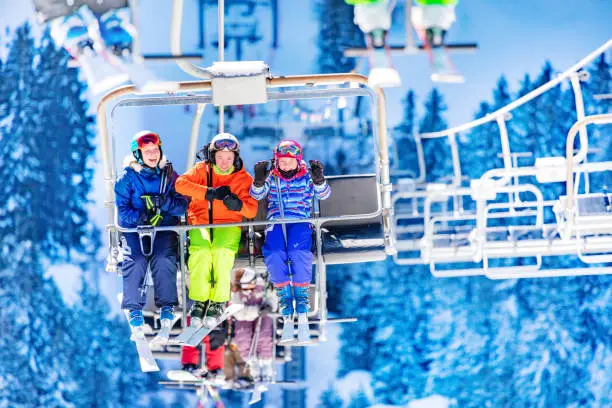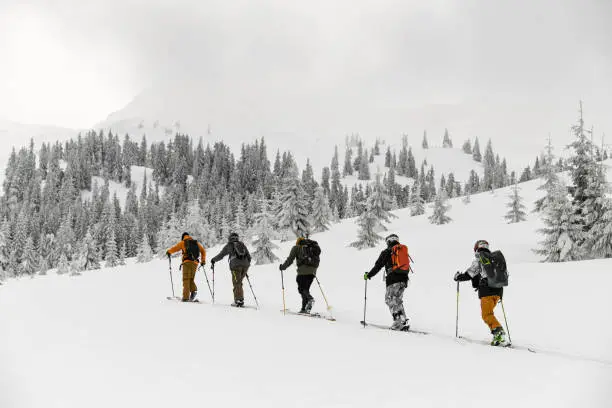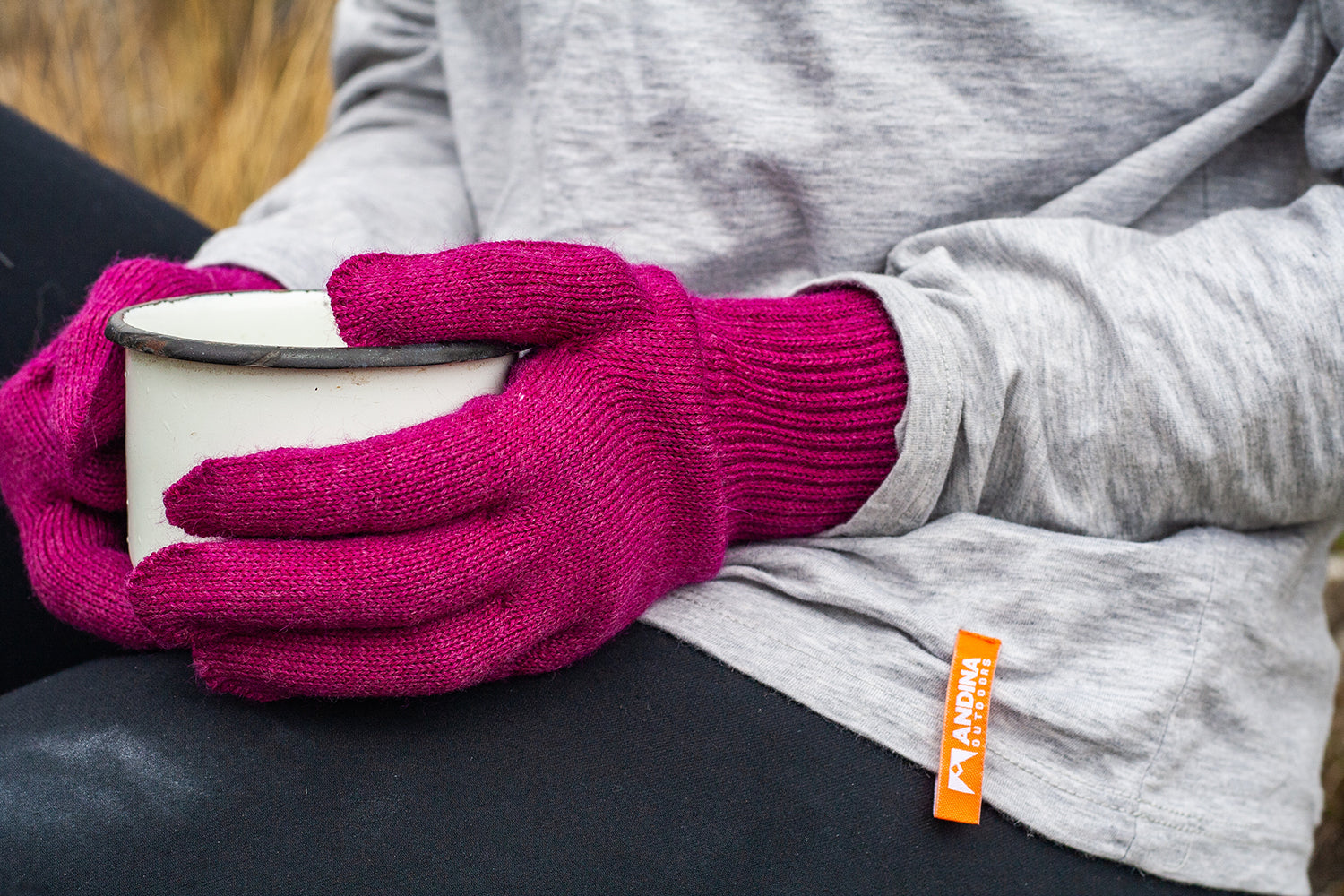An Essential Beginner's Guide to Gearing Up for the Slopes
Skiing for the first time is equal parts thrill and challenge. Maybe you’ve always dreamed of gliding over fresh powder, or maybe a friend finally convinced you to tag along for a snowy weekend in the mountains. Either way, your first ski trip is a memorable adventure—and the right gear can mean the difference between a cold, frustrating experience and a comfortable, confidence-building one.
While you don’t need to splurge on top-of-the-line equipment for your first time, having the right winter gear for first-time skiers is essential. You’ll want to stay warm, dry, and mobile as you learn the ropes—and with smart layering and the right materials, that’s totally achievable.
In this beginner ski gear checklist, we’ll walk you through the must-haves—from base layers to gloves—to help you focus less on freezing and more on finding your rhythm on the snow. And if you’re curious about sustainable, high-performance natural fibers, we’ll show you why brands like Andina Outdoors are rethinking cold-weather comfort with options like alpaca base layers and accessories.

Your Beginner Ski Gear Checklist: Layer Up Like a Pro
1. Ski Base Layers for Beginners
Your base layer is your first defense against the cold—and it does more than just add warmth. A good base layer wicks sweat away from your body, keeping you dry and preventing that bone-chilling cold that can set in after a few runs.
- Merino wool base layers are a trusted favorite for their breathability and softness.
- Alpaca base layers, however, are gaining traction among winter athletes. Alpaca fiber is warmer than merino by weight, dries faster, and is naturally hypoallergenic—making it a smart choice for those new to snow sports.
-
Avoid cotton completely—it traps moisture and cools you down fast.
✅ Try a long-sleeved alpaca or merino wool top with matching leggings for a breathable, insulating foundation.

2. Middle Layers: Trap the Warmth
Your mid-layer sits between your base and outer layers, acting as insulation. It should be warm but still breathable.
- Fleece jackets or pullovers are an easy, affordable option.
- Wool sweaters can work well, but if you’re looking for softness without bulk, lightweight alpaca fleece offers excellent thermal regulation.
- On very cold days, consider fleece-lined pants over your base layer bottoms.
✅ Bring a few options—you’ll appreciate having the ability to adjust your warmth level as the day goes on.

3. Outer Layers: Protect from Wind and Moisture
Your outer layer protects you from snow, sleet, wind, and chairlift drizzles. Even if the sky is blue when you arrive, conditions can shift quickly.
- Look for ski jackets and pants that are both waterproof and breathable. Features like powder skirts, pit zips, and adjustable hoods add versatility.
- If you’re borrowing or piecing together gear, a rain jacket can work in dry snow—but ski-specific gear provides better insulation and comfort.
✅ Choose outerwear that gives you room to move and accommodates your base and mid-layers without feeling bulky.

4. Thermal Ski Socks: Keep Your Feet Happy
Cold feet can ruin an otherwise great ski day. The secret is wearing a single, well-designed pair of thermal socks—no doubling up.
- Alpaca ski socks offer unmatched breathability, insulation, and comfort—even when damp.
- Merino wool ski socks are another solid choice.
- Skip cotton socks—they get wet and stay wet.
✅ Look for knee-high designs that stay in place inside your ski boots and won’t bunch or wrinkle.

5. Warm Ski Gloves and Essential Accessories
Your extremities are especially vulnerable to cold. Having the right gloves and face protection can make or break your first day on the slopes.
- Waterproof, insulated gloves or mittens are a must.
- Alpaca gloves deliver warmth, softness, and natural temperature regulation—great for new skiers who’ll be touching snow often.
- Don’t forget a neck gaiter or balaclava to shield your face from icy winds.
- A helmet is essential (and rentable at most resorts).
- Goggles offer eye protection and visibility in changing light conditions; sunglasses are okay only on clear, bright days.
Mittens keep fingers warmer, but gloves offer more dexterity—choose based on what feels best to you.

6. Headwear: Stay Cozy Before and After Skiing
Off the slopes, or before your helmet goes on, a warm, breathable hat makes all the difference.
- Alpaca beanies are naturally soft, insulating, and moisture-wicking.
- Merino wool beanies are another good option—just avoid bulky or loose knits that won’t fit under a helmet.
Stash one in your bag for après-ski or layering under your helmet on frigid days.
Final Tips for First-Time Skiers
- Check the forecast: Snowy days demand different layers than sunny ones.
- Bring extra layers: It’s easier to remove than wish you had more.
- Rent your gear: Skis, boots, poles, and helmets can all be rented while you’re learning.
- Sign up for lessons: Even one session with an instructor can change everything.
- Take breaks and hydrate: Cold weather can be surprisingly draining.

Dress Smart, Ski Happy
There’s something incredible about that first successful run—the crunch of snow under your skis, the mountain air, the sense of accomplishment. But staying warm and dry is key to enjoying it all. With the right gear, especially base layers, socks, and accessories made from performance natural fibers like alpaca, you'll set yourself up for success.
At Andina Outdoors, we craft sustainable alpaca gear designed to keep you comfortable in the elements—because your first ski trip should be exciting, not exhausting.
Ready to build your beginner ski kit?
Explore Andina’s collection of alpaca base layers, ski socks, gloves, and beanies—carefully designed for warmth, breathability, and long-lasting comfort on every mountain adventure.


